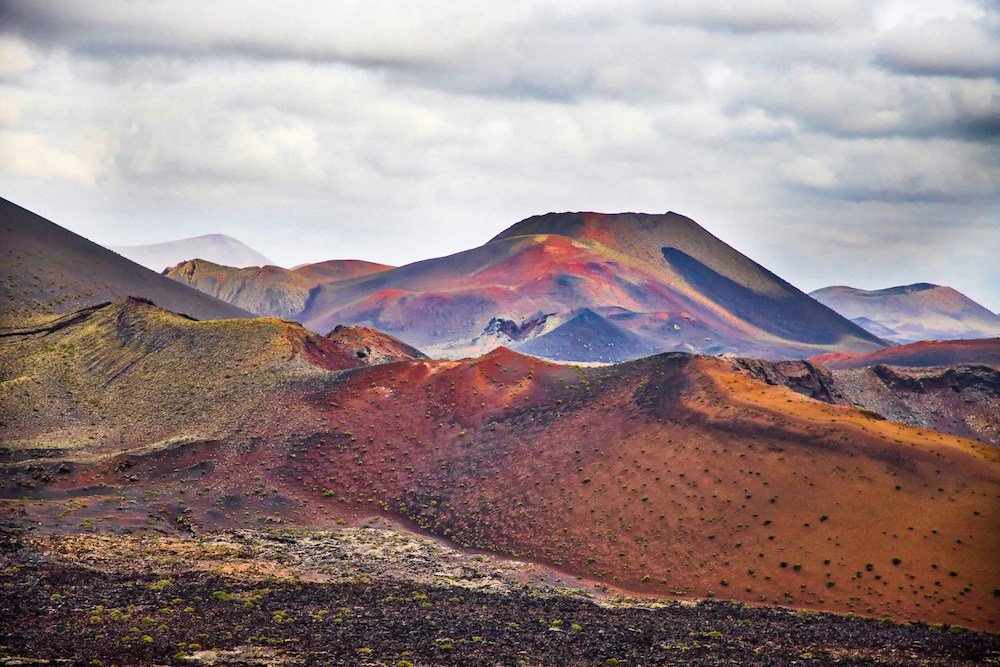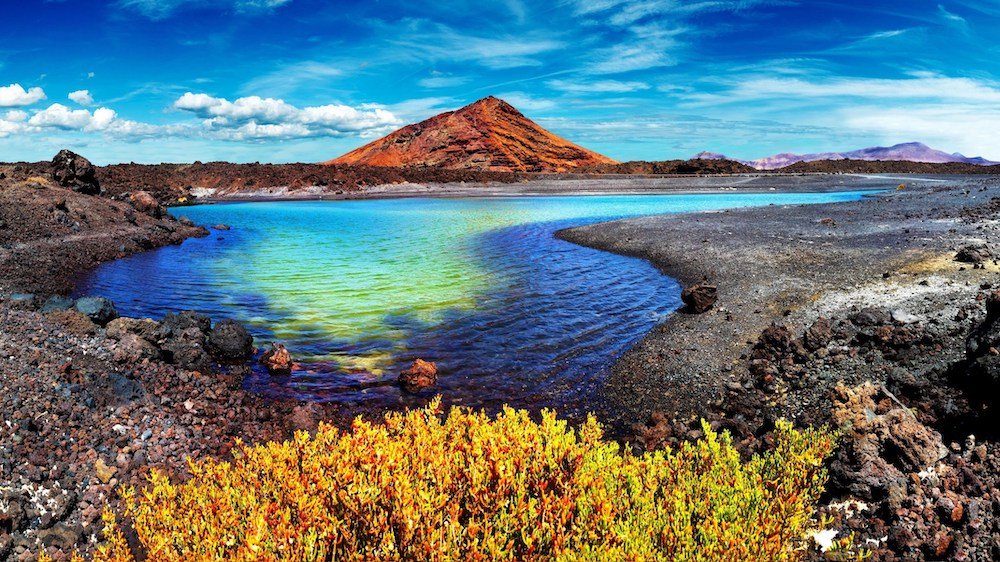
Want to discover the best things to do in Lanzarote?
Lanzarote, a jewel in the crown of the Canary Islands, Spain, is a destination like no other.
Renowned for its extraordinary volcanic landscapes, pristine beaches, and rich cultural heritage, this island invites travelers to embark on a journey of discovery and adventure.
With its unique terrain, formed by centuries of volcanic activity, Lanzarote offers a mesmerizing blend of natural beauty and artistic flair.
The island’s commitment to preserving its environment and cultural identity has earned it the prestigious designation as a UNESCO Biosphere Reserve, highlighting its global significance and the importance of sustainable tourism.
As you explore the “things to do in Lanzarote,” you’ll find that the island caters to a wide array of interests and passions.
From wandering through the surreal, lunar-like terrains of the Timanfaya National Park to diving into the crystal-clear waters of the Atlantic, Lanzarote is a playground for nature lovers, adventurers, and culture enthusiasts alike.
The influence of artist César Manrique is palpable across the island, blending art with nature in a harmonious and inspiring way.
Whether you’re drawn to the allure of its natural wonders, the depth of its art and culture, the thrill of adventure, or the serenity of relaxation, Lanzarote promises an array of activities to enchant every visitor.
This article will guide you through the top “things to do in Lanzarote,” ensuring your visit is filled with unforgettable experiences that capture the essence of this extraordinary island.
Now, let’s take a look at the best things to do in Lanzarote:
1. Timanfaya National Park
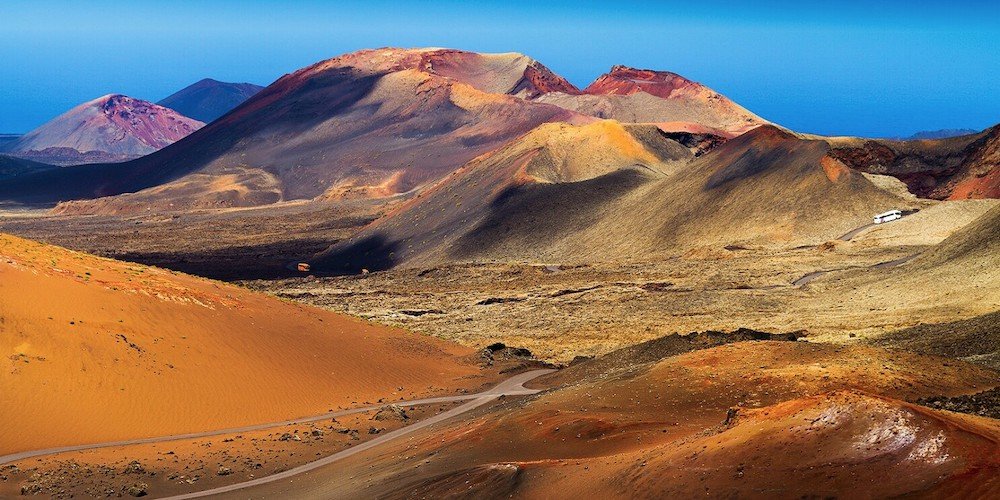
Embarking on a journey to Lanzarote without visiting Timanfaya National Park would be to miss out on one of the island’s most iconic and awe-inspiring attractions.
This vast expanse of volcanic soil, known for its moon-like terrain and sparse vegetation, offers visitors a glimpse into the raw power of nature and the beauty that arises from it.
The park’s landscapes seem to tell tales of the earth’s fiery heart, with craters, volcanic tubes, and rugged formations painting a picture of a planet in formation.
Exploring Lunar Landscapes and Volcanic Activity
Timanfaya National Park is a testament to Lanzarote’s volcanic history, most notably marked by the eruptions that took place in the 18th century.
The park’s terrain, with its varying shades of red, orange, and black, creates an otherworldly atmosphere that captivates the imagination of all who visit.
The sense of standing on another planet is palpable, making it a must-visit for anyone seeking unique “things to do in Lanzarote.”
Guided Tours and Demonstrations of Geothermal Heat
To fully experience the wonders of Timanfaya National Park, taking part in one of the guided tours is highly recommended.
These tours not only provide fascinating insights into the volcanic activity and the natural forces that shaped the landscape but also ensure that visitors can explore safely, respecting the delicate ecosystem of the park.
The demonstrations of geothermal heat are a highlight, where temperatures just below the surface reach between 400°C to 600°C, allowing for spectacular demonstrations such as dry brushwood igniting instantly upon being tossed into a hole, or water being turned into steam in mere seconds.
The park’s unique approach to showcasing the power of geothermal energy is both educational and thrilling, making “Timanfaya National Park tours” an unforgettable experience.
Whether you’re a nature enthusiast, a photography lover, or simply in search of extraordinary “things to do in Lanzarote,” the volcanic landscapes of Timanfaya National Park offer a rare opportunity to witness the Earth’s raw beauty.
2. Jameos Del Agua
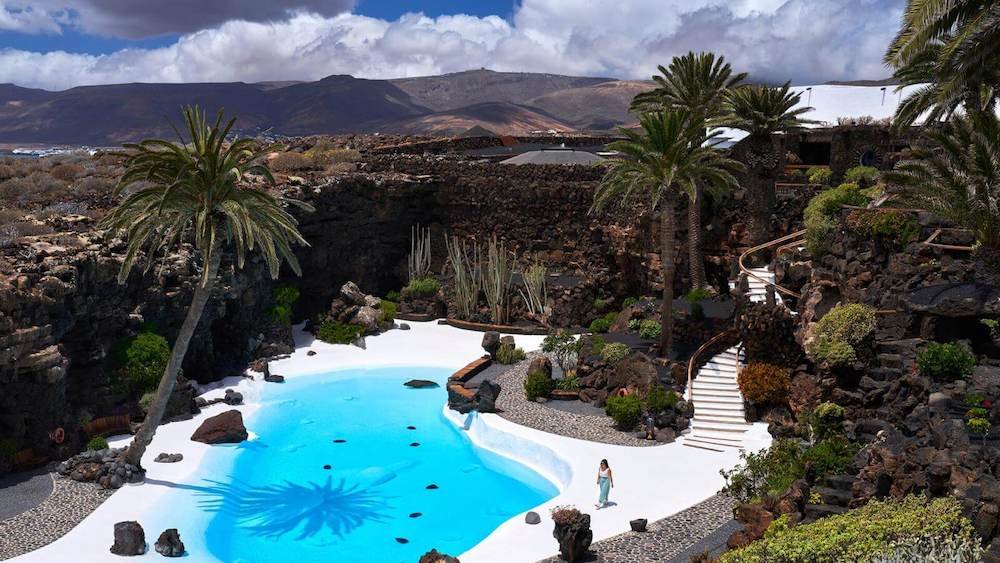
Jameos Del Agua stands as a sublime testament to the vision of César Manrique, Lanzarote’s most celebrated artist and architect, whose work seamlessly blends nature with human creativity.
This unique attraction, part of a lava tube formed by the volcanic eruption of Monte Corona, is one of the most enchanting “things to do in Lanzarote.”
Manrique transformed this natural wonder into a place of beauty and tranquility, showcasing his commitment to environmental harmony.
A Harmony of Art and Nature
At the heart of Jameos Del Agua is a magical underground lake, home to a species of tiny, blind albino crabs that are found nowhere else on Earth.
These delicate creatures, with their otherworldly appearance, add to the mystique of the place.
The contrast between the dark volcanic rock and the clear, azure waters of the lake creates a serene atmosphere that captivates all who visit.
The space is ingeniously designed, with a restaurant, concert hall, and swimming pool all integrated into the natural formation of the lava tube.
Manrique’s influence is evident in every detail, from the choice of vegetation to the way light filters into the cave, highlighting the natural beauty of the site.
The Jameos Del Agua is not just an attraction; it’s a tribute to Lanzarote’s volcanic landscape and an example of sustainable architectural design.
Exploring Jameos Del Agua
Visiting Jameos Del Agua offers an opportunity to experience the harmony between human creativity and natural wonders.
The site is a symbol of Lanzarote’s cultural heritage, reflecting César Manrique’s vision of a world where art and nature coexist.
For those searching for “things to do in Lanzarote,” a trip to Jameos Del Agua is a must, providing a unique blend of geological marvel, artistic expression, and environmental conservation.
The beauty of Jameos Del Agua lies not only in its visual appeal but also in the experience it offers visitors.
The tranquility of the underground lake, the unexpected sight of the albino crabs, and the architectural genius of César Manrique come together to create an unforgettable experience.
For travelers keen on exploring the artistic and natural beauty of Lanzarote, “Jameos Del Agua Lanzarote” and “César Manrique” are keywords that open the door to an enchanting world where the boundaries between art and nature blur.
3. Cueva de los Verdes
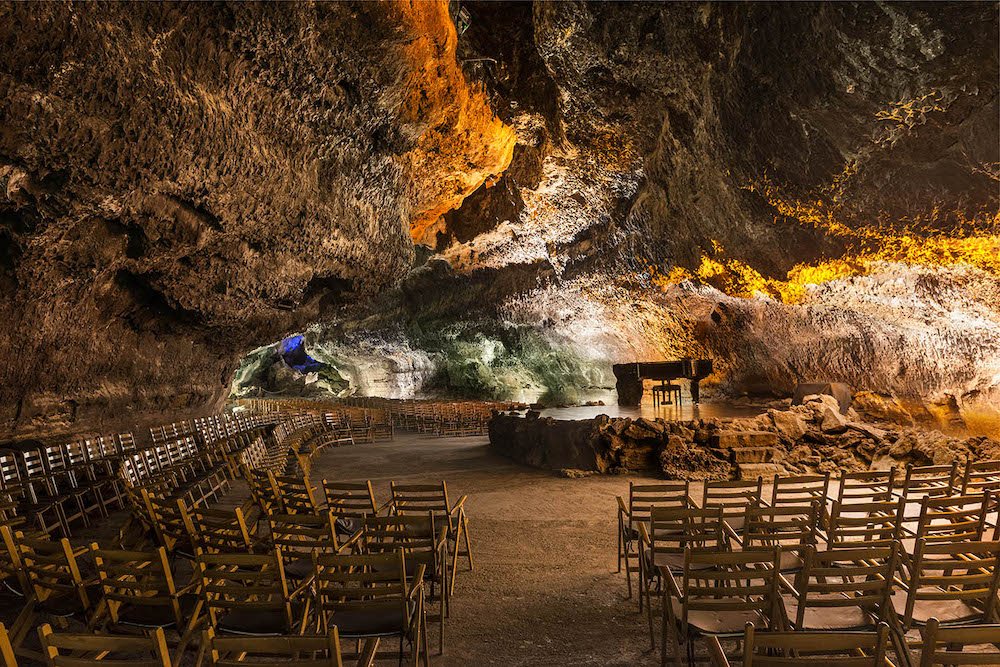
Among the myriad of natural wonders that adorn Lanzarote, the Cueva de los Verdes holds a special place.
This extensive network of underground lava tubes, formed by volcanic eruptions from Monte Corona, offers a fascinating glimpse into the geological forces that have shaped the island.
The historical and geological significance of Cueva de los Verdes is unparalleled, making it a compelling destination for those interested in the Earth’s volcanic activity and the natural beauty it can create.
A Journey Through Time and Earth
The Cueva de los Verdes is not only a natural marvel but also a site steeped in history.
It served as a hideout for the local population during pirate invasions in the 16th and 17th centuries, adding layers of human history to its geological wonders.
Today, visitors can explore this remarkable lava tube through guided tours that illuminate the cave’s formation, its historical context, and the unique features that make it one of the most interesting “things to do in Lanzarote.”
Guided Tours and Acoustic Concerts
To fully appreciate the beauty and significance of the Cueva de los Verdes, guided tours are available, offering insights into its formation and history.
These tours are not only educational but also reveal the natural artistry of the lava flows and the ethereal atmosphere within the cave.
The highlight for many visitors is the acoustic concerts held in one of the cave’s chambers, known for its exceptional sound quality.
The combination of music and the natural acoustics of the cave provides a mesmerizing experience that resonates with visitors long after they leave.
The Cueva de los Verdes tours showcase the cave’s dramatic lighting and the unique formations created by the cooling lava, highlighting the natural beauty and scientific interest of “lava tubes Lanzarote.”
These tours are an opportunity to delve deep into the earth and experience the power of nature firsthand.
Discovering the Depths of Lanzarote
For those compiling their list of “things to do in Lanzarote,” the Cueva de los Verdes offers an unparalleled adventure into the heart of the island.
The guided tours and the extraordinary acoustic concerts within the cave are experiences that blend education, history, and natural beauty into an unforgettable journey.
With “Cueva de los Verdes tours” and “lava tubes Lanzarote” serving as your guide, exploring this underground wonder becomes a highlight of any visit to the island, revealing the mesmerizing interplay between Lanzarote’s volcanic past and its cultural heritage.
4. Playas de Papagayo
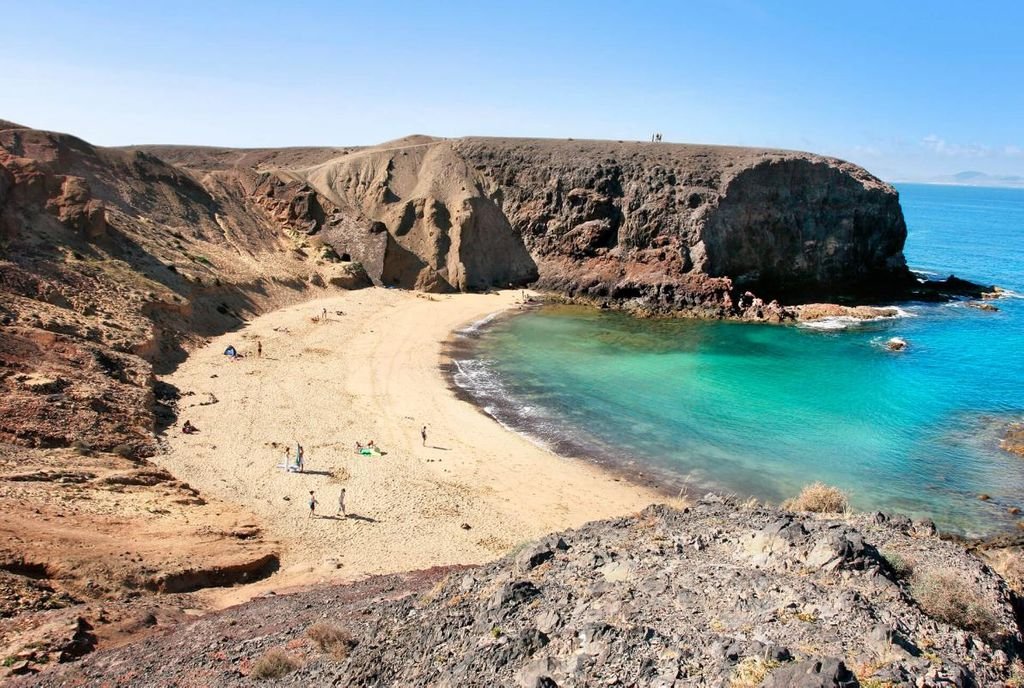
Nestled in the southern tip of Lanzarote, the Playas de Papagayo are a series of pristine, unspoiled beaches that boast some of the clearest waters and most breathtaking coastal views the island has to offer.
This chain of coves, with their fine golden sand and tranquil, turquoise waters, represents the epitome of paradise for beach lovers.
The natural beauty of these beaches makes them a must-visit for anyone looking for the “best beaches in Lanzarote.”
Unparalleled Natural Beauty
The allure of Playas de Papagayo lies in their untouched natural scenery, far removed from the bustle of crowded tourist spots.
Each cove offers a unique beach experience, from secluded bays perfect for a peaceful day under the sun to more open areas ideal for swimming and snorkeling in the crystal-clear waters.
The clarity of the water, combined with the rich marine life, provides an excellent opportunity for underwater exploration, making these beaches a favorite among families and adventure seekers alike.
Accessing Paradise
Access to Playas de Papagayo is via a dirt track from the nearest road, which adds an element of adventure to reaching these secluded beaches.
There is a nominal entrance fee, which contributes to the conservation of the area, ensuring that its natural beauty is preserved for future generations.
Parking is available near the beaches, although it’s recommended to arrive early during peak season to secure a spot.
Facilities at Playas de Papagayo are minimal, preserving the area’s natural charm.
However, there are a few amenities, including a restaurant and restroom facilities at the main beach, providing comfort without compromising the area’s pristine nature.
Visitors are encouraged to bring their own supplies, such as water and sunscreen, to ensure a comfortable and enjoyable day out.
A Must-Visit Destination
For those compiling their list of “things to do in Lanzarote,” a visit to Playas de Papagayo is unquestionably a highlight.
Whether you’re seeking to unwind on the sand, swim in the clear waters, or simply soak up the natural beauty of Lanzarote’s coastline, these beaches offer a serene escape from the ordinary.
The “Playas de Papagayo” are not just a destination but a breathtaking experience that epitomizes the beauty of Lanzarote’s shores.
5. Mirador del Río
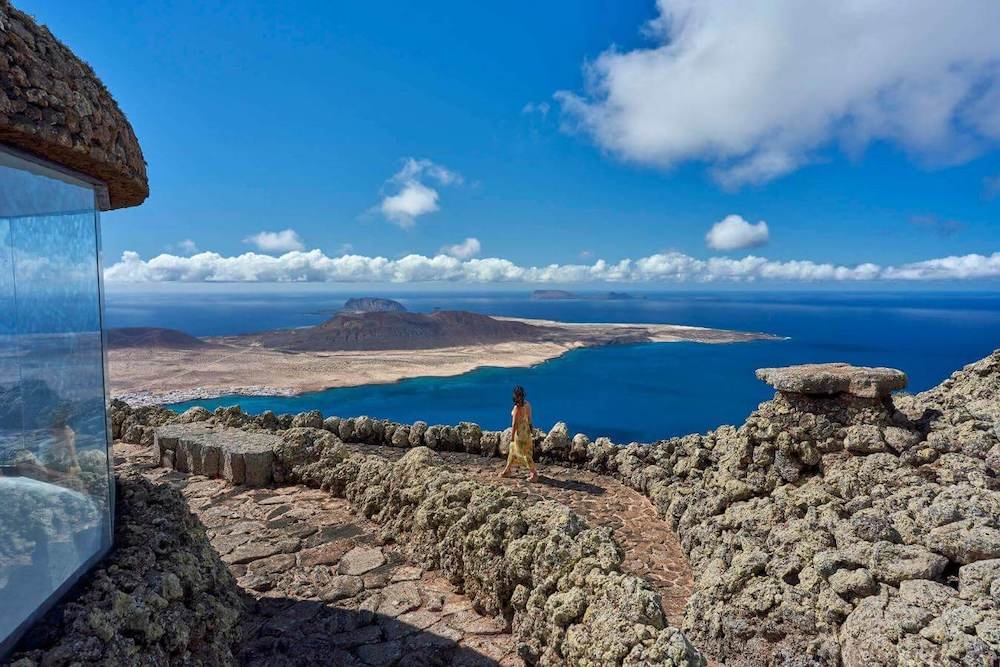
Perched at the dizzying height of about 475 meters above sea level, Mirador del Río is one of Lanzarote’s most breathtaking viewpoints, offering unparalleled views of La Graciosa and the surrounding archipelago.
This architectural marvel, another masterpiece by César Manrique, seamlessly blends into the natural landscape, demonstrating once again the artist’s profound respect for and connection to Lanzarote’s natural beauty.
An Architectural Marvel with Panoramic Views
Mirador del Río is not just a viewpoint but an architectural wonder that exemplifies Manrique’s genius in integrating art with nature.
The structure is cleverly built into the rock face, making it almost invisible from a distance.
Inside, visitors are greeted by large glass windows that frame the stunning panorama of the sea and islands beyond, offering what are arguably the “best views in Lanzarote.”
The vista encompasses the azure waters of the Atlantic Ocean, the rugged coastline of northern Lanzarote, and the serene beauty of La Graciosa, the largest of the Chinijo Archipelago.
César Manrique’s Vision
César Manrique’s vision for Mirador del Río was to create a space where people could not only see the beauty of Lanzarote’s landscapes but also feel a part of them.
The viewpoint serves as a testament to Manrique’s commitment to environmental conservation and his ability to foresee the potential of natural sites as platforms for artistic expression.
His work at Mirador del Río has left a lasting legacy, making it a must-visit for those exploring the “things to do in Lanzarote.”
The design of Mirador del Río, with its natural lava stone walls, hidden entrance, and organic forms, is a homage to the volcanic essence of the island.
Inside, the decor includes elements inspired by traditional Lanzarote styles, further embedding the structure within its cultural and natural context.
Exploring Mirador del Río
Visiting Mirador del Río offers more than just stunning views; it’s an immersion into the vision of César Manrique and a chance to appreciate the harmony between human creativity and nature’s splendor.
The facility includes a café where visitors can enjoy refreshments while soaking in the breathtaking scenery, making it the perfect spot to relax and reflect on the beauty of the world.
For anyone compiling a list of “things to do in Lanzarote,” Mirador del Río is indispensable.
Not only does it offer “the best views of La Graciosa” and the surrounding islands, but it also provides insight into the artistic soul of Lanzarote, making it a profound and inspiring experience.
6. Jardín de Cactus
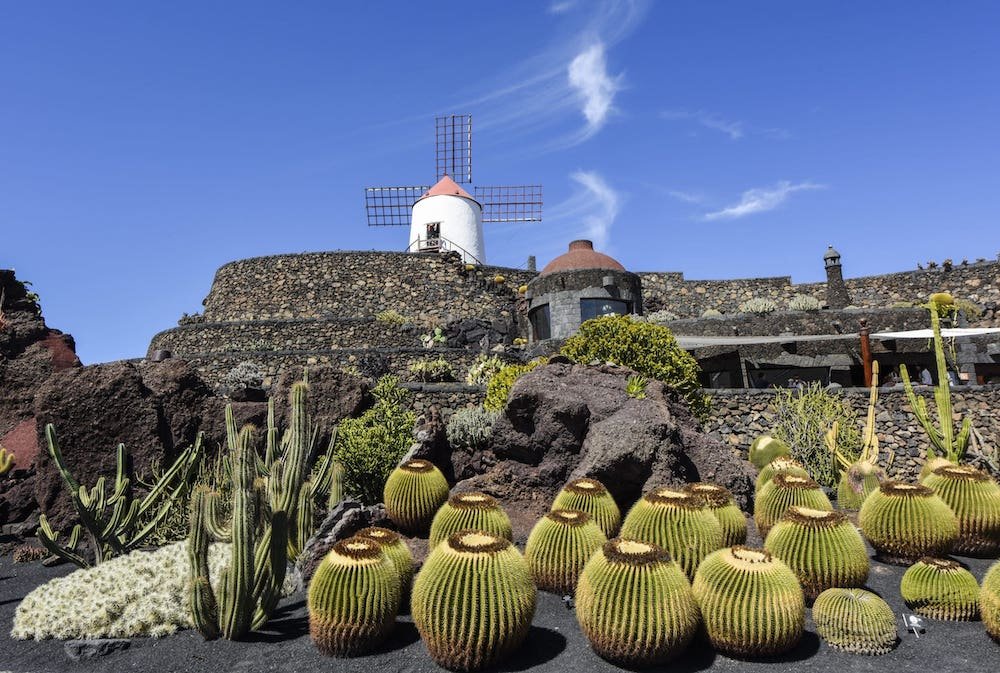
Nestled in the heart of Lanzarote, the Jardín de Cactus is yet another masterpiece from the visionary artist César Manrique.
This unique botanical garden is dedicated to the preservation and display of cacti from around the world, offering a striking contrast to Lanzarote’s volcanic landscapes.
The garden not only serves as a testament to the island’s commitment to natural beauty but also showcases Manrique’s unparalleled ability to blend art with nature.
A Masterpiece of Design and Botany
The Jardín de Cactus is home to over 1,000 species of cacti, carefully curated and planted in a spectacular amphitheater-shaped quarry that takes advantage of the natural contours of the land.
This design choice is reflective of Manrique’s philosophy, which emphasizes the harmonious integration of human creations with the natural environment.
Visitors to the garden are treated to a stunning display of shapes, sizes, and colors, ranging from small, delicate specimens to towering giants that reach towards the sky.
The layout of the Jardín de Cactus is meticulously planned, with winding paths that invite exploration and discovery.
Each turn reveals a new vista or a beautifully composed arrangement of plants, demonstrating the care and thought put into the garden’s design.
Informational plaques provide insights into the species on display, making a visit to the garden not only a visual delight but also an educational experience.
Exploring the World of Cacti
A visit to the Jardín de Cactus offers a unique opportunity to immerse oneself in the diverse and fascinating world of cacti.
The garden’s collection includes species from deserts across the globe, showcasing the adaptability and variety of these resilient plants.
The contrast between the rugged volcanic backdrop of Lanzarote and the lush, vibrant collection of cacti creates a mesmerizing experience that captivates all who visit.
The Jardín is not only a “César Manrique garden” but also a celebration of life’s ability to thrive in the harshest of conditions.
It stands as a reminder of the beauty and resilience of the natural world, and Manrique’s vision ensures that the garden resonates with visitors on a deep, emotional level.
A Must-Visit for Nature and Art Lovers
For anyone looking for “things to do in Lanzarote,” the Jardín de Cactus is an essential stop.
It’s a place where the boundaries between art, architecture, and botany blur, creating an experience that is both serene and stimulating.
The garden not only pays homage to the natural beauty of cacti but also serves as a lasting tribute to César Manrique’s legacy on the island.
Visitors leave the Jardín de Cactus with a renewed appreciation for the natural world and the creative spirit that can transform a landscape into a work of art.
Whether you’re a botany enthusiast, an admirer of Manrique’s work, or simply in search of beauty and tranquility, the “Jardín de Cactus Lanzarote” offers an unforgettable journey into the heart of Lanzarote’s cultural and natural heritage.
7. La Geria Wine Region
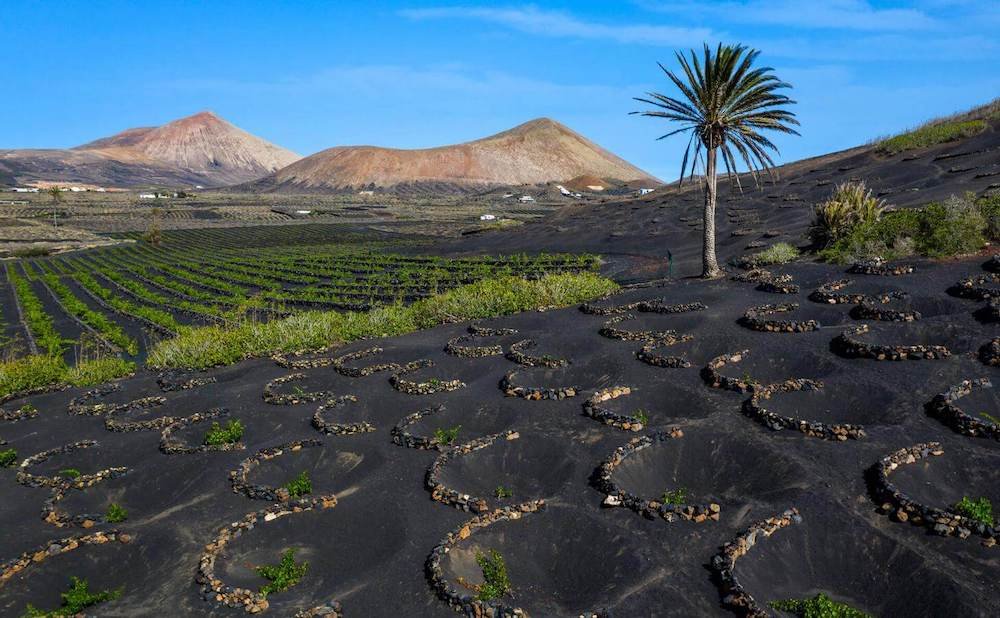
La Geria, Lanzarote’s premier wine region, offers a fascinating glimpse into the island’s unique approach to viticulture, set against the dramatic backdrop of its volcanic landscapes.
This area is renowned for its innovative and resilient agricultural methods, particularly the use of zocos for vine cultivation.
These techniques not only showcase the ingenuity of Lanzarote’s farmers but also contribute to the production of some of the most distinctive wines in the world.
Innovative Vine Cultivation in Volcanic Soils
The zocos method of cultivation involves digging shallow pits into the volcanic ash, then planting a vine in the center and surrounding it with a low, circular stone wall.
This ingenious approach protects the plants from Lanzarote’s strong winds and captures moisture, crucial for growth in this arid climate.
The volcanic soil imparts a unique mineral-rich character to the grapes, which is reflected in the distinctive flavors of the wines produced in La Geria.
Visitors to La Geria vineyards are often struck by the surreal beauty of the landscape, with rows of green vines contrasting sharply against the black volcanic earth.
This method of cultivation is not only a testament to the adaptability of the island’s inhabitants but also a harmonious blend of human innovation with the natural environment.
Experience Lanzarote Wine Tasting Tours
For wine enthusiasts and casual visitors alike, exploring the “La Geria vineyards” through guided wine tasting tours is a must.
These tours offer an intimate look at the wine-making process, from the unique cultivation techniques to the art of wine tasting.
Visitors have the opportunity to sample a variety of wines, learning about the subtleties that define each variety and the volcanic influence that makes them unique.
The wineries in La Geria welcome guests with open arms, offering tours that combine education with pleasure.
These experiences provide insights into the history of wine production on the island, the challenges faced by local producers, and the innovations that have allowed the industry to thrive.
From crisp, aromatic whites to full-bodied, volcanic reds, the wines of La Geria capture the essence of Lanzarote.
A Toast to Lanzarote’s Agricultural Heritage
Participating in a “Lanzarote wine tasting” is not only a delightful sensory experience but also a journey through the island’s agricultural and cultural heritage.
La Geria demonstrates how human creativity and perseverance can turn a seemingly inhospitable environment into a fertile ground for exceptional wines.
Whether you’re a connoisseur or simply curious about the unique viticultural landscape of Lanzarote, La Geria offers an unforgettable experience.
The region’s combination of scenic beauty, innovative agricultural practices, and exquisite wines make it a standout destination for those seeking “things to do in Lanzarote.”
Raise a glass to the resilience of Lanzarote and the exceptional flavors born from its volcanic soils.
8. Fundación César Manrique

The Fundación César Manrique, located in the artist’s former home, serves as a vibrant cultural center and a monument to Manrique’s profound impact on Lanzarote.
This foundation is dedicated to preserving the island’s natural beauty and promoting sustainable development, reflecting Manrique’s vision of living in harmony with the environment.
Visitors to the foundation are offered a unique insight into the life and work of one of Lanzarote’s most influential figures, making it a pivotal destination for anyone interested in the “art and culture of Lanzarote.”
A Unique Home Turned Museum
César Manrique’s home itself is a masterpiece of architectural and environmental design.
Built on a lava flow from the 1730-1736 eruptions, the structure is integrated into the natural landscape, with rooms built into volcanic bubbles and tunnels.
The house showcases Manrique’s talent for blending natural forms with functional living spaces, creating a harmonious balance between the built environment and the natural world.
Today, this home serves as a museum, offering visitors a glimpse into the artist’s daily life and his creative process.
The Fundación features extensive gardens, art galleries, and exhibition spaces that display Manrique’s work and that of other artists.
It stands as a testament to his commitment to art, nature, and the cultural heritage of the Canary Islands.
Preserving Lanzarote’s Natural Beauty
The Fundación César Manrique plays a crucial role in the ongoing efforts to preserve Lanzarote’s unique landscapes and ecosystems.
It continues Manrique’s legacy by advocating for responsible tourism, environmental conservation, and cultural preservation.
The foundation’s work ensures that future generations can enjoy the natural beauty and artistic heritage of Lanzarote, just as Manrique envisioned.
Visiting the Fundación
A visit to the “César Manrique Foundation” is not just a tour of a museum; it’s an immersive experience into the ethos of one of Spain’s most visionary artists.
It offers profound insights into how art can influence environmental conservation and urban planning.
For those exploring “things to do in Lanzarote,” the foundation provides a unique perspective on the island’s development and the delicate balance between human intervention and natural preservation.
The foundation’s location, in the heart of Lanzarote, makes it easily accessible for visitors.
It not only serves as a cultural landmark but also as an educational center, offering workshops, talks, and exhibitions that delve into Manrique’s work and his influence on “art and culture in Lanzarote.”
9. Water Activities in Lanzarote
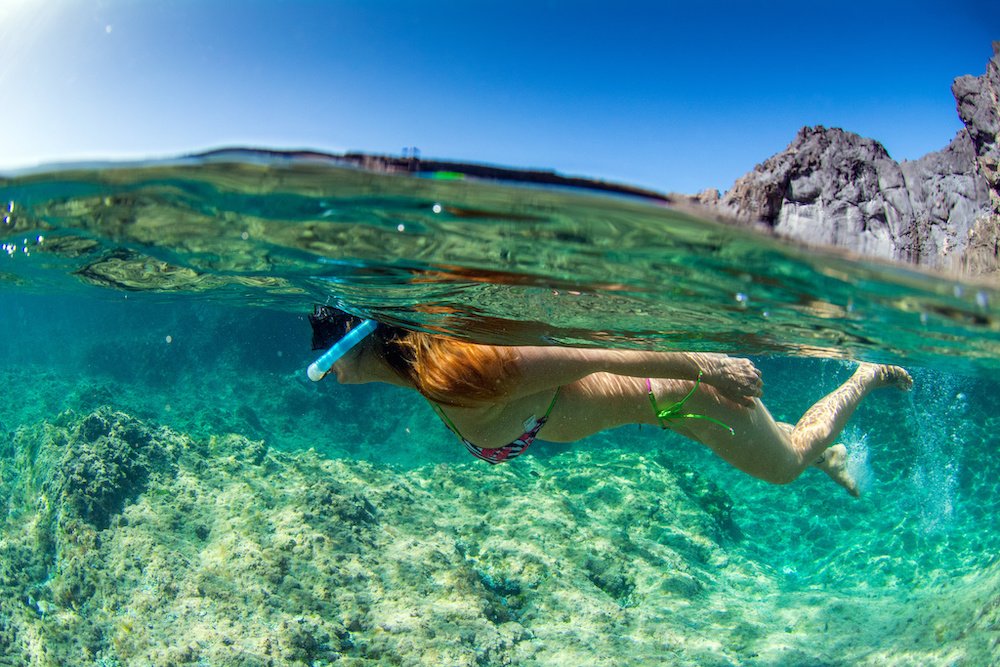
Lanzarote’s crystal-clear waters and abundant marine life make it a premier destination for water sports enthusiasts.
From the tranquil bays perfect for snorkeling to the adrenaline-pumping surf spots, the island caters to all levels of adventure seekers.
Among the plethora of “things to do in Lanzarote,” exploring its underwater world should be at the top of your list, offering a unique glimpse into the aquatic wonders that lie beneath the surface.
Snorkeling and Diving Sites
Snorkeling in Lanzarote is an accessible and rewarding experience, with numerous sites along the coastline offering calm waters and abundant marine life.
For those looking to dive deeper, the island’s diving sites are among the best in the Atlantic.
The clear visibility, diverse marine ecosystems, and the presence of unique underwater landscapes make “Lanzarote snorkeling” a must-try activity.
One of the island’s most famed diving locations is the Museo Atlántico, Europe’s first underwater sculpture museum.
Created by artist Jason deCaires Taylor, this submerged gallery is not only a marvel of contemporary art but also serves as an artificial reef, promoting marine biodiversity.
Diving in the Museo Atlántico offers an unparalleled experience, where the worlds of art and nature intertwine beneath the waves.
Unique Locations: Playa Chica and Museo Atlántico
Playa Chica, a beloved spot among locals and tourists alike, is renowned for its sheltered bay and rich underwater life, making it an ideal location for both snorkeling and diving.
Its crystal-clear waters provide perfect visibility to explore the volcanic rock formations and the myriad of sea creatures that call this place home.
The Museo Atlántico, located off the coast of Playa Blanca, invites divers to explore its hauntingly beautiful sculptures, which are designed to evolve over time as marine life inhabits the area.
The museum provides a unique narrative on humanity and our interaction with the natural world, offering a dive experience unlike any other.
Embracing the Island’s Aquatic Adventures
Whether you’re a seasoned diver or someone looking to snorkel for the first time, Lanzarote’s waters offer a plethora of experiences to suit every taste.
From the serene to the surreal, the underwater attractions of this island are bound to leave you in awe.
With “Lanzarote snorkeling” and “Museo Atlántico diving” providing just a glimpse into the array of water-based activities available, adventurers and nature lovers alike will find Lanzarote to be a destination that keeps calling them back to the sea.
For those drawn to the thrill of exploring beneath the surface, Lanzarote offers a unique blend of natural beauty, artistic wonder, and adventurous spirit. Its waters not only serve as a playground for water sports enthusiasts but also as a reminder of the profound connection between land, sea, and art.
10. Hiking in Lanzarote
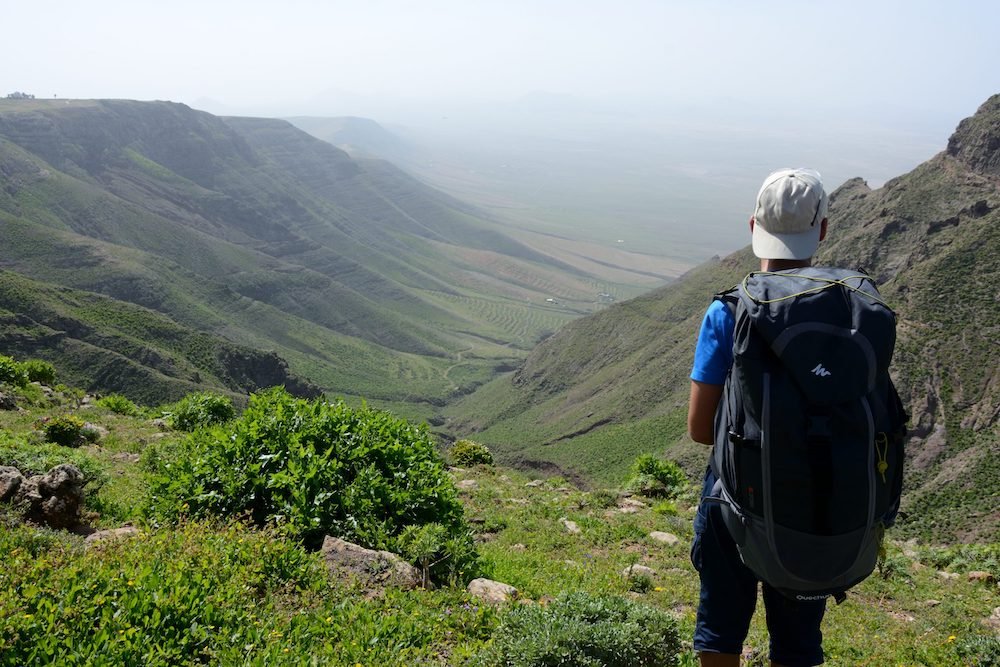
Lanzarote’s rugged beauty isn’t just confined to its shores; the island’s diverse landscapes offer some of the most spectacular hiking experiences in the Canary Islands.
From the lunar-like terrains of its volcanic fields to the lush valleys and breathtaking coastlines, hiking in Lanzarote is a journey through a variety of natural wonders.
For those compiling their list of “things to do in Lanzarote,” exploring its trails should undoubtedly be a priority.
Discovering Lanzarote’s Hiking Trails
The island boasts a network of trails that cater to all levels of hikers, from leisurely walks to more challenging treks.
These trails offer a unique opportunity to experience the island’s volcanic landscapes, endemic flora, and panoramic views up close.
Among the must-visit hiking destinations is the “Los Volcanes Natural Park,” a protected area that showcases the raw beauty of Lanzarote’s volcanic terrain.
The park’s paths lead adventurers through a landscape shaped by centuries of volcanic activity, offering insights into the island’s fiery past.
Tips for Visiting Los Volcanes Natural Park and Other Hiking Spots
When planning a hike in “Los Volcanes Natural Park” or any of Lanzarote’s trails, it’s essential to be well-prepared. Here are some tips for a safe and enjoyable hiking experience:
- Start Early: Beat the heat and the crowds by starting your hike early in the day.
- Stay Hydrated: Carry plenty of water, as the arid climate and lack of shade can lead to dehydration.
- Wear Appropriate Gear: Sturdy hiking shoes and sun protection are must-haves.
- Respect the Environment: Stay on marked paths to protect the island’s delicate ecosystems.
- Check the Weather: Conditions can change quickly, so be sure to check the forecast before heading out.
Exploring the “Lanzarote hiking trails” is not just about physical activity; it’s an immersive experience that connects you to the island’s natural beauty and geological history.
From the serene coastal paths to the stark beauty of the volcanic landscapes, each trail offers a unique perspective on Lanzarote’s diverse environments.
Embracing the Great Outdoors
For those eager to discover Lanzarote’s natural wonders, hiking provides an unparalleled opportunity to explore the island’s unique terrain on foot.
Whether traversing the dramatic landscapes of “Los Volcanes Natural Park” or following coastal trails with stunning sea views, hikers will find that Lanzarote offers an adventure for every type of nature lover.
Lanzarote’s trails are not just routes through the landscape; they are passages through time, offering insights into the island’s volcanic origins and the forces that have shaped its current beauty.
For adventurers, nature enthusiasts, and everyone in between, “Lanzarote hiking trails” promise an unforgettable journey through one of the most unique and captivating environments in the world.
Conclusion
Lanzarote, a land of stark contrasts and ethereal beauty, offers an array of experiences that cater to every type of traveler.
From the mesmerizing volcanic landscapes of Timanfaya National Park to the underwater sculptures of Museo Atlántico, the island presents a unique blend of natural wonders and artistic creations.
The diverse attractions we’ve explored, including the serene beaches of Playas de Papagayo, the architectural ingenuity of Mirador del Río, and the lush Jardín de Cactus, showcase the island’s versatility and the vision of César Manrique, whose influence is woven into the very fabric of Lanzarote.
As you consider the “things to do in Lanzarote,” remember that the island is more than just a destination; it’s a journey through a landscape that has been meticulously preserved and cherished.
The variety of experiences, from tasting the unique wines of La Geria vineyards to hiking through the rugged trails of Los Volcanes Natural Park, illustrates the richness of Lanzarote’s natural and cultural heritage.
Whether you’re basking in the tranquility of its beaches, marveling at its artistic landmarks, or delving into the depths of its marine and terrestrial wonders, Lanzarote offers a mosaic of experiences that cater to the desires of explorers, dreamers, and conservationists alike.
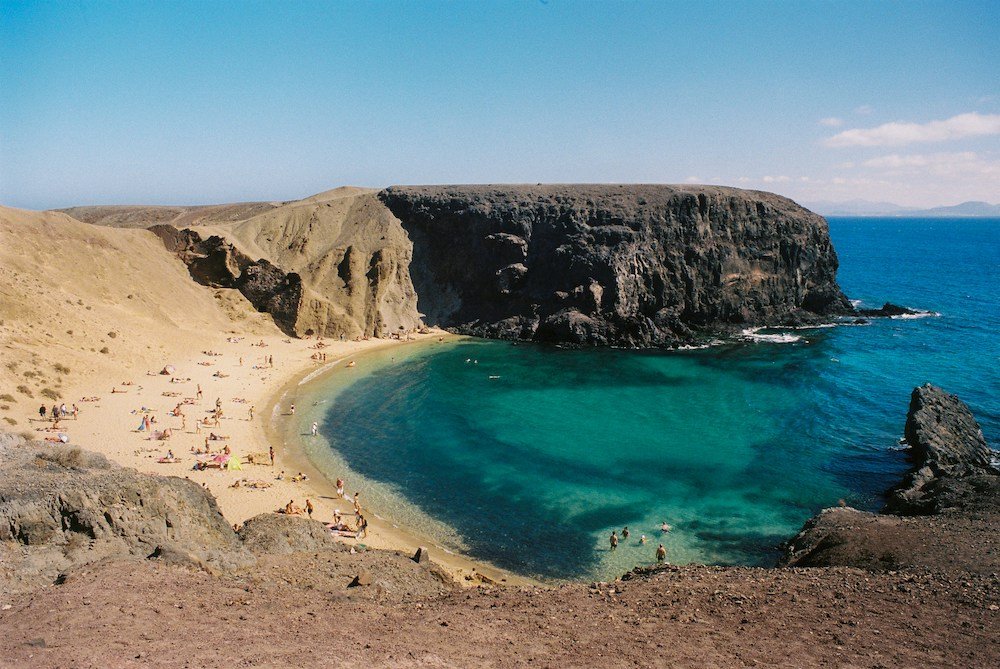
FAQ’s About Things To Do In Lanzarote:
What is Lanzarote famous for?
Lanzarote is renowned for its stunning volcanic landscapes, beautiful beaches, and the artistic legacy of César Manrique.
This unique blend of nature and culture includes attractions such as Timanfaya National Park, with its moon-like terrain and geothermal activity, and Manrique’s architecturally intriguing sites like Jameos Del Agua and Mirador del Río.
The island’s commitment to sustainable tourism and its status as a UNESCO Biosphere Reserve also contribute to its fame.
How many days enough for Lanzarote?
To fully experience the diversity of Lanzarote, a stay of at least 5 to 7 days is recommended.
This allows for enough time to explore the island’s key attractions, enjoy its beaches, experience the local cuisine, and perhaps venture on a day trip to nearby islands like La Graciosa.
However, those with a keen interest in hiking, wine tasting, or diving may wish to extend their visit to fully indulge in these activities.
Is Lanzarote cheap or expensive?
The cost of visiting Lanzarote can vary widely depending on your travel style.
Compared to many other European destinations, Lanzarote can be relatively affordable, especially when it comes to accommodation and dining.
However, prices can be higher in tourist-centric areas and during peak travel seasons.
Budget travelers can find good deals by booking in advance and choosing local dining options, while luxury seekers will find ample opportunities to indulge.
Is it worth going to Lanzarote?
Absolutely. Lanzarote offers a unique combination of natural beauty, cultural richness, and sustainable tourism practices that make it a worthwhile destination for all types of travelers. Whether you’re interested in exploring its volcanic landscapes, relaxing on pristine beaches, diving into its rich arts and culture scene, or tasting its unique volcanic wines, Lanzarote has something special to offer.
How safe is Lanzarote for tourists?
Lanzarote is generally considered very safe for tourists. Crime rates are low, and the locals are known for being friendly and welcoming.
As with any travel destination, it’s wise to take common-sense precautions such as safeguarding your belongings and staying aware of your surroundings, especially in crowded tourist areas.
How much is a 3 course meal in Lanzarote?
The cost of a 3-course meal in Lanzarote can vary depending on the restaurant’s location and quality.
On average, you can expect to pay between €25 and €40 per person for a 3-course meal in a mid-range restaurant.
Dining in more touristy areas or at high-end restaurants can be more expensive, while local eateries and off-the-beaten-path spots may offer lower prices.
What should I be careful of in Lanzarote?
When visiting Lanzarote, be mindful of the sun and heat, especially during the summer months.
Adequate sun protection, hydration, and avoiding the midday sun are important. Be cautious when swimming or engaging in water sports, as currents can be strong.
Respect the natural environment, especially in protected areas like Timanfaya National Park, by staying on designated paths and following local guidelines.
Do I need a car in Lanzarote?
While public transportation and tours are available, renting a car in Lanzarote offers the most flexibility to explore the island at your own pace.
Many of Lanzarote’s attractions, including some of its most beautiful beaches and unique landscapes, are more accessible with a car.
For those planning to stay mainly in one area or who prefer not to drive, relying on buses, taxis, and organized tours is feasible.
Can you walk around Lanzarote?
While Lanzarote offers numerous walking and hiking trails that traverse its stunning landscapes, walking as a means of traveling between different towns and attractions across the island is not practical due to the distances and sometimes harsh terrain.
However, for exploring local areas, coastal paths, and natural parks, walking can be a delightful way to experience the island’s beauty up close.
